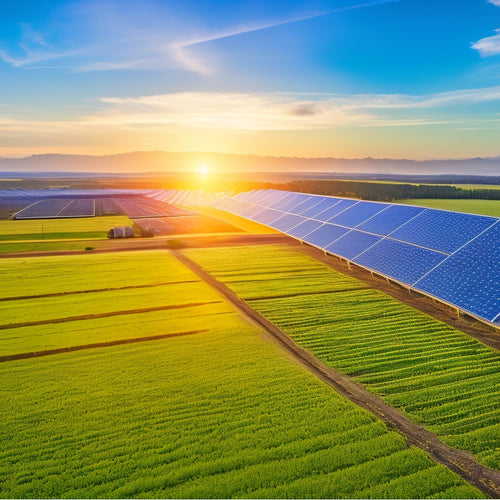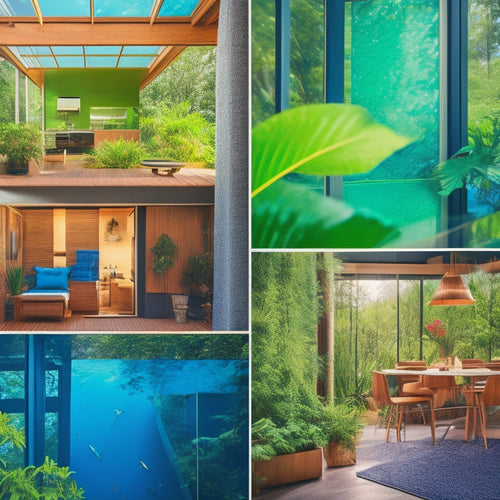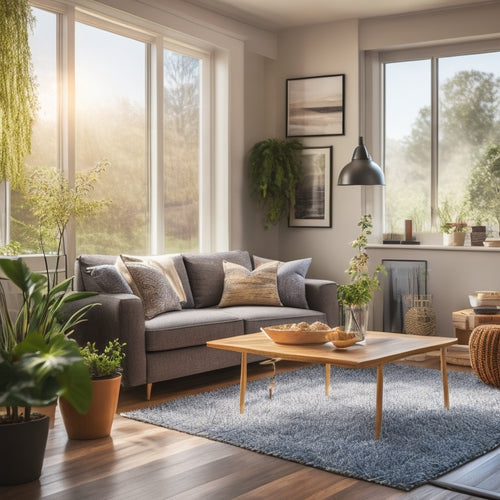
Design Your Solar Panel System in 3 Easy Steps
Share
You're about to create a solar panel system that's tailored to your unique energy needs. Begin by evaluating your energy consumption, calculating your daily energy usage, and identifying areas for optimization. Next, choose your system components, selecting high-efficiency solar panels, inverters, and batteries that meet your specific requirements. Finally, visualize your installation, considering the best placement for maximum energy production, roof layout, and aesthetic considerations. By following these three easy steps, you'll be well on your way to designing a solar panel system that's perfect for you - and that's just the beginning of your solar journey!
Key Takeaways
• Calculate daily energy consumption in watt-hours (Wh) to determine the required solar panel system size.
• Choose high-efficiency solar panels, suitable mounting systems, and compatible inverters for optimal energy production.
• Assess roof layout, obstructions, and direction to identify the most suitable location for maximum energy production.
• Select the right battery chemistry and capacity to ensure reliable energy storage and backup.
• Conduct an energy audit to review historical consumption patterns and identify energy-intensive appliances and peak usage periods.
Assess Your Energy Needs
Before designing your solar panel system, determine how much energy you need to generate by calculating your daily energy consumption in watt-hours (Wh). This important step guarantees you size your system correctly, avoiding undersizing or oversizing, which can lead to energy waste or unmet energy needs.
To calculate your daily energy consumption, you'll need to conduct an energy audit. This involves reviewing your historical consumption patterns to identify your energy-intensive appliances and peak usage periods. Review your past utility bills to determine your average daily energy consumption in Wh. You can also use online energy audit tools or consult with a professional to help you with the assessment.
Choose Your System Components
With your energy needs assessment in hand, you can now select the right combination of solar panels, inverters, and batteries to build a system that meets your specific requirements. This is where you get to choose the components that will make your solar panel system efficient and effective.
Here are some key considerations to keep in mind when selecting your system components:
-
Panel Efficiency: Look for solar panels with high efficiency ratings to maximize energy production.
-
Mounting Options: Choose from roof-mounted, ground-mounted, or tracking systems to find the best fit for your space.
-
Inverter Type: Decide between string inverters, microinverters, or power optimizers to optimize energy conversion.
- Battery Type: Select the right battery chemistry and capacity to meet your energy storage needs.
Visualize Your Installation
You'll need to map out your solar panel system's layout to guarantee a seamless installation, so start by identifying the most suitable location for your panels. Consider your roof's layout, taking note of obstructions like vents, skylights, and chimneys. This will help you determine the best placement for your panels, ensuring maximum energy production.
Next, think about aesthetic considerations. Do you want your panels to blend in with your roof's architecture, or do you want them to stand out? Consider the color and style of your roof, as well as any local regulations or homeowners' association rules that may affect your installation.
You may also want to take into account the direction your roof faces and the amount of shade it receives, as these factors can impact your system's performance.
Frequently Asked Questions
Can I Install Solar Panels on My Apartment Balcony?
"As you gaze out at the cityscape from your balcony, you wonder: can you harness the sun's power in your urban oasis? Unfortunately, installing solar panels on your balcony may not be feasible due to space constraints and structural limitations."
Are Solar Panels Affected by Shade From Trees or Buildings?
You'll want to assess shade patterns around your solar panel system, as partial shading can lead to significant energy loss; even a small amount of shade can reduce energy production by up to 30%.
Do Solar Panels Generate Power During a Blackout?
When the grid goes dark, you're left feeling lost in a blackout like a ship without anchor. But, rest assured, your solar panels won't generate power during a blackout, prioritizing Grid Resilience, unless you have a battery-backed system for Emergency Power.
How Long Do Solar Panels Last Before Needing Replacement?
You'll be glad to know that solar panels are built to last, with a typical lifespan of 25-30 years; however, their panel durability decreases over time due to energy degradation, affecting their efficiency by around 0.5-1% annually.
Can I Add More Panels to My Existing Solar Panel System?
You can definitely add more panels to your existing system, boosting your energy output! This system upgrade, or panel expansion, will give you an energy boost, increasing your capacity and providing a significant power enhancement.
Related Posts
-

Solar Power for Reducing Carbon Footprint
Solar power is an effective strategy for reducing your carbon footprint. By adopting solar energy, you can cut greenh...
-

Innovative Sustainable Materials for Energy-Efficient Homes
Innovative sustainable materials enable you to create energy-efficient homes while promoting environmental responsibi...
-

Energy-Efficient Home Upgrades for Cost Reduction
To reduce costs with energy-efficient home upgrades, focus on essential improvements like smart thermostats, energy-e...


